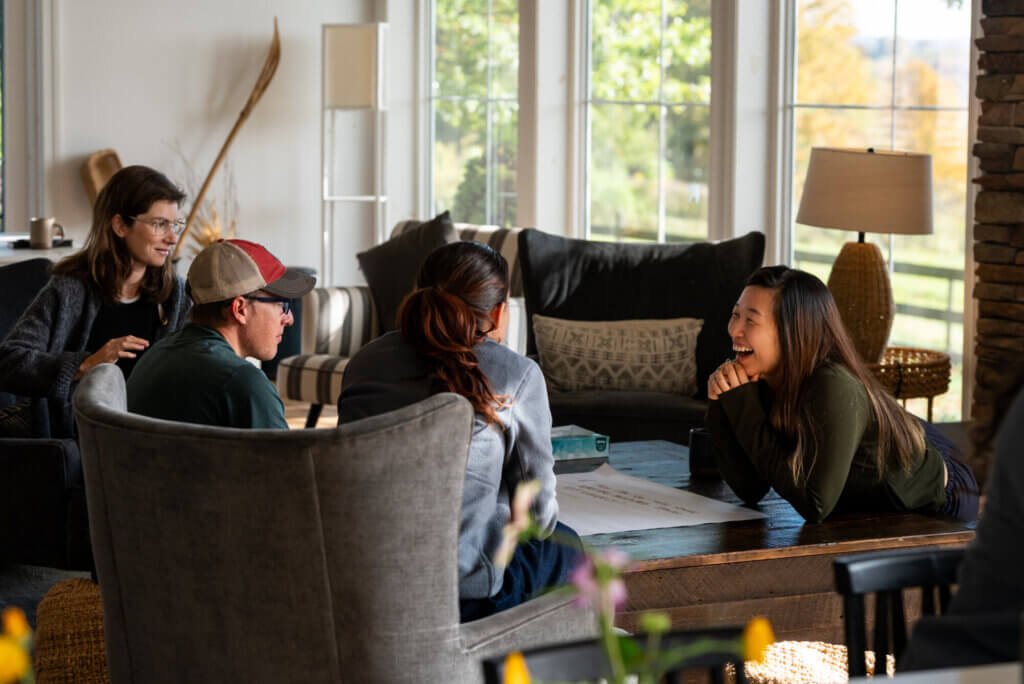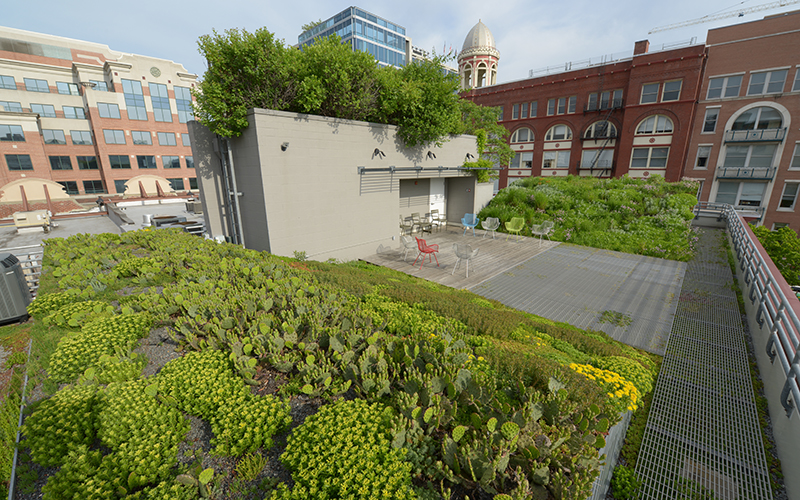
Modern cities are incredible feats of engineering, but many are also brittle, siloed, and unsustainable. Buildings consume vast amounts of energy, water, and materials. Water, waste, and power infrastructure systems are often designed in isolation, without feedback loops, redundancy, or reciprocity. We treat buildings like items set apart, instead of what they could be: participants in a larger ecosystem.
So we asked a new question:
What if buildings behaved like organisms? What if cities functioned more like ecosystems?
To explore this, we turned to AskNature Chat, a tool created by the Biomimicry Institute to help humans learn from the rest of nature. With just a few prompts, we were able to uncover deep biological strategies, connect them to real-world infrastructure examples, and propose a new vision for regenerative cities—all in one seamless conversation.
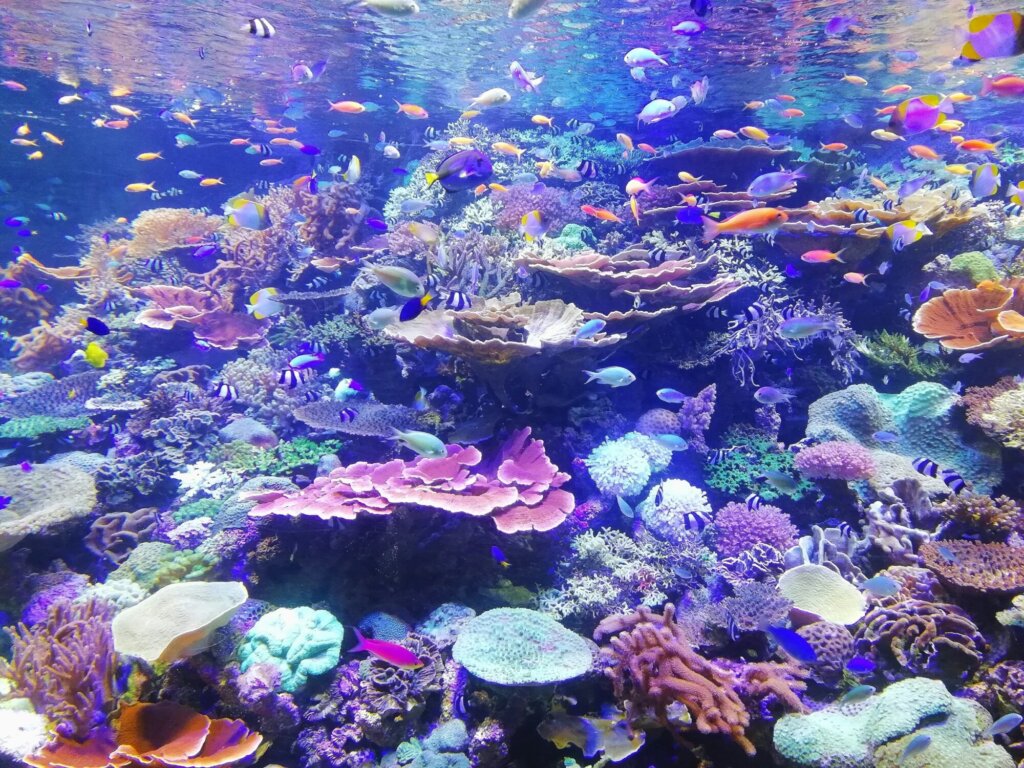
The Challenge: Infrastructure Designed in Isolation
Today, a “sustainable” building often means a high-performing one: solar panels, energy efficiency, water reuse. These are important steps. But nature doesn’t thrive through isolated excellence, it thrives through connection. Trees in forests share nutrients via underground fungal networks. Coral reefs are built by communities of species exchanging protection and nutrition. Prairies store carbon and cycle water because of the relationships between plants, microbes, and soil.
Cities can and should learn from these systems.
AskNature Chat: From Metaphor to Mechanism
Instead of starting with a blank page or a static article, we began with curiosity. AskNature Chat helped us move rapidly from insight to solution, grounded in nature’s tested strategies and real-world performance.
We used AskNature Chat to:
- Translate biological patterns into infrastructure insights.
- Discover which organisms and ecosystems offer the most useful analogies.
- Uncover scientific studies and peer-reviewed examples.
- Connect with case studies already proving this is possible.
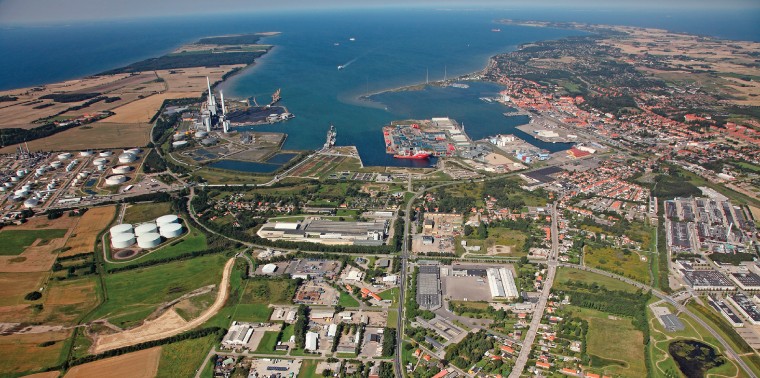
Nature’s Solutions and Real-World Examples
Utilizing AskNature Chat, we drew out five key strategies in nature, and found examples of them already being applied in the world of today:
Resource sharing like forest mycorrhizal networks: Thermal Energy Networks in cities like Drammen, Norway distribute waste heat between buildings.
Water cycling like sponge ecosystems: Green roofs and rainwater harvesting systems at ASLA Headquarters reduce stormwater impact and share water across uses.
Feedback and sensing like a beehive: Smart city sensor networks that allow systems to adapt energy, water, or transportation use based on real-time data.
Material cycling like a rainforest: Kalundborg Eco-Industrial Park in Denmark reuses waste materials and energy across industrial neighbors.
Resilience through diversity and redundancy: EcoDistrict planning in Portland and beyond includes layered transportation, green infrastructure, and land use diversity to buffer against shocks.
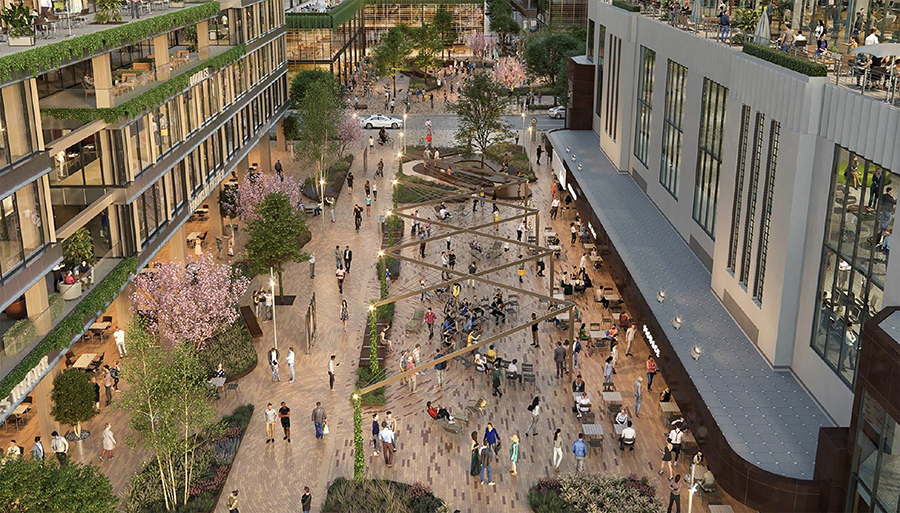
A New Vision for the Built Environment
We then looked for concrete actions that could put those general principles into practice. These aren’t the only possibilities, but they move the conversation along, serving up specific suggestions that can be weighed and edited or scrapped as needed.
Map the flows between buildings: energy (heating/cooling), water (stormwater, greywater), materials (construction waste, reused components), information (sensors, occupancy, system health). Find where flow can be shared.
Design infra‑hubs at the neighbourhood or block scale (not just building‑scale) that act like organs in a living organism: shared heat/cooling loop, shared water harvesting/filtration system, shared materials depot or reuse hub.
Use sensors + feedback + adaptability: Systems should monitor usage, loads, waste, surplus and re‑route as needed. Much like trees sense their neighbours via the fungal network and respond.
Build redundancy and diversity: Use multiple paths, multiple sources, overlapping functions so the system does not fail if one building or component is down. Emulate the ecological concept of functional redundancy.
Andrew Howley is the Chief Editor at the Biomimicry Institute. As a science communicator, he spent 11 years at the National Geographic Society, connecting audiences with explorers and grantees through websites, blogs, social media, and live-streamed interviews and events. Learn more about Andrew and the rest of the team here.



